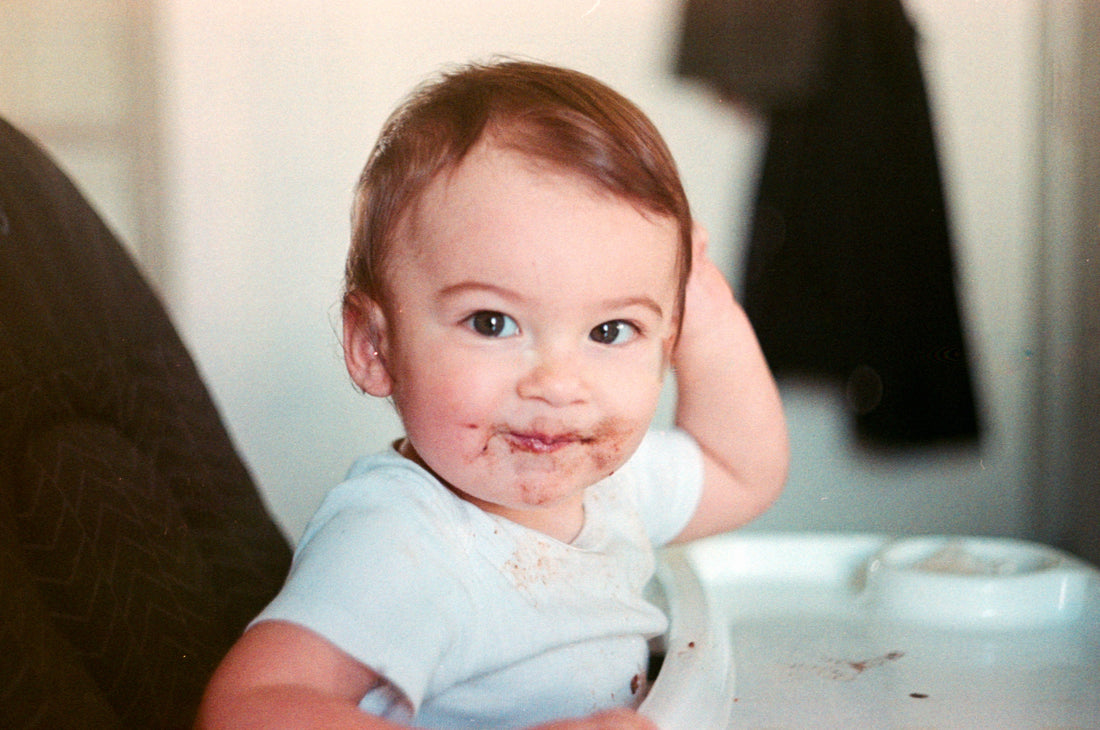
Nutrition and Toddler Oral Health - tooth-friendly snacks!
Share
As a mom to a 20 month old toddler, I can appreciate the challenges that come with choosing tooth-friendly snacks that are also accepted by my little one. If you have a choosy eater at home, you are not alone. I say choosy because one day my son will eat tooth-friendly snacks, like apples and string cheese, and the next day, refuses to look at them.
But not to worry. After a quick google search on "choosy eaters", I have learned that “choosy eating” is related to kids learning to make decisions about their own eating habits and is even indicative of them showing some independence. This term is different from picky eaters, who often refuse particular foods at all times. Regardless of choosy or picky, there are tooth-friendly options for snacking and have some fun with your little ones trying them out.

How does nutrition affect your toddler’s teeth?
While brushing and flossing are important parts of maintaining good oral hygiene, there are other factors that play a role in preventing cavities, and that is DIET and FREQUENCY! Let me explain this process. Our mouths harbor lots of good and bad bacteria and to simplify this for kids, we call the bad bacteria “sugar bugs”. When these sugar bugs interact with foods high in sugar and starch, a film of plaque forms on the tooth and begins to attack the outer enamel layer. Snacking on foods or liquids that contain high amounts of sugar and starch then creates an acidic environment in the mouth, causing the enamel to continue to weaken. The more snacking, the longer the acidic environment lasts and plaque continues to attack leading to demineralization of the enamel and cavity formation.
So this is where choosing tooth-friendly snacks becomes even more important for your growing toddler. Kids love to snack and could probably do it all day if we let them. But because the frequency of snacking plays a role in good oral health, look for snacks that won’t create an acidic environment leading to a higher risk for cavities.
Tooth-friendly snacks:
- Cheese, yogurt, kale chips, plain nuts or sunflower seeds (if you think your toddler is ready for this type of crunch)
- Carrots, bell pepper slices, sweet potato chips
These foods are high in Vitamin A. Vitamin A helps keep gums healthy and saliva flowing.
- Citrus fruits: pineapple, oranges, cantaloupe, grapefruit
- Berries, mango, kiwi
- Apples and bananas
All of these snacks are high in Vitamin C. Vitamin C helps keep teeth and gums healthy by keeping the gum connective tissues strong. When this tissue is strong around the teeth, there is less chance for gingivitis, or bleeding gums.
Foods to avoid:
Be cautious of snacks that are high in sugars and starches. Starches break down into sugars and should be offered as special occasion snacks rather than everyday go-to’s.
Snacks higher in sugar and starch content include:
- Processed foods such as crackers, potato chips, cookies, goldfish, etc.
- Dried fruits (raisins, craisins, dried apricots, etc.)
- Sticky granola bars
- Gummy candies
- Watch out for those sneaky beverages as well: sodas, fruit juices, energy drinks (gatorade), and other sweetened beverages. Try replacing these with water or a sugar-free sweetener to add to water.
If you introduce one (or some) of these tooth-friendly snacks to your toddler and they are hesitant the first time around, try again at another time or a later day. They may just be unsure at first and need time to decide on whether they like it or not!
Wishing all you moms and dads out there happy snacking and strong teeth! By choosing tooth-friendly snacks at an early age, you are helping set your toddler up for oral health success and good eating habits for their future. As always, remember that a good oral hygiene routine of brushing and flossing at home plays a large role in a healthy smile. Parents are encouraged to help with brushing and flossing until the age of 9. Choosing oral health products, such as Grin's Oral Care Pack, and interactive tools, such as Kids' Brushing Challenge, you are helping make oral hygiene fun at home for you and your child.

About the Author
Kristen Cockrell, MS, RDH. Kristen is a Registered Dental Hygienist with a passion for preventive pediatric dentistry and oral health education. Kristen recently completed a master’s degree in dental hygiene education at the University of North Carolina at Chapel Hill.
